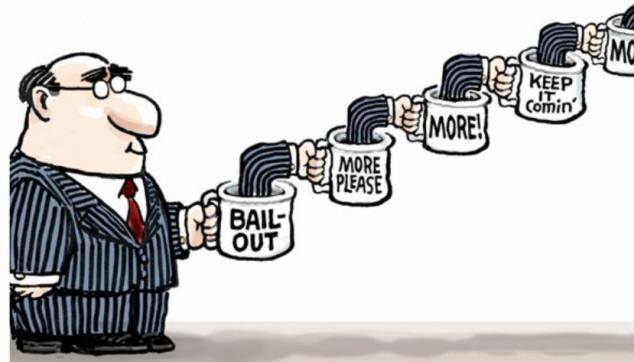Ah, o enigma eterno que faz cócegas na fantasia de aficionados financeiros – desde os fervorosos acólitos de bitcoin até os entusiastas do ouro constante – os centros da ascensão estonteante da dívida nacional dos EUA a um impressionante ascensão de US $ 36,51 trilhões até a fatídica data de 22 de fevereiro, 2025. Ao contrário das reivindicações ridículas de certos comentaristas que simplificam os dedos das reduções de impostos, o coração de O assunto está em três forças entrelaçadas: indulgências fiscais extravagantes, deficiências implacáveis entre receita e despesas e o ônus da sempre montagem de obrigações de juros. 🤑
Oi galera, prontos para mergulhar no mundo louco das notícias de cripto? Junte-se ao nosso canal do Telegram onde deciframos os mistérios da blockchain e rimos das mudanças de humor imprevisíveis do Bitcoin. É como uma novela, mas com mais drama descentralizado! Não fique de fora, venha com a gente agora e vamos aproveitar a montanha-russa das criptos juntos! 💰🎢
☞ Junte-se ao Telegram
O dilema da dívida definido
Os proponentes de dinheiro sólido-aqueles leais ao bitcoin e ao venerável ouro-em uma das áreas que uma estrutura monetária disciplinada (como uma moeda de suprimento fixo) restringem inerentemente o apetite insaciável por empréstimos estaduais, aplicando a responsabilidade fiscal. Eles postulam que os mercados livres permitem correções econômicas naturais – branqueias, austeridade – para podar os excessos de nossos modos extravagantes. Os sistemas fiduciários, por outro lado, permitem um verdadeiro buffet de financiamento por déficit por meio de mecanismos inflacionários, cortando a ligação entre os gastos e as restrições tangíveis. 🍽️
O que, ore, diga, está impulsionando o colossal de US $ 36,51 trilhões nos EUA? Uma inspeção mais detalhada revela seus principais culpados.
A dívida da América violou primeiro a marca de US $ 1 trilhão em 1981, sob o olhar atento de Ronald Reagan, amplamente alimentado por gastos militares. A expansão do complexo industrial militar, estimulado por iniciativas como a Iniciativa de Defesa Estratégica (SDI) e os programas das forças convencionais, desempenhou um papel significativo. O caso do Irã-Contra, um pequeno escândalo delicioso, também contribuiu, com bilhões desaparecendo no éter de apropriações indevidas. Durante todo o mandato de Reagan, a modernização nuclear e a produção de mísseis balísticos intercontinentais (ICBMS) floresceram como ervas daninhas em um jardim negligenciado. 🌱

During the reign of Bill Clinton, military spending soared as the U.S. maintained an active presence in far-flung locales such as Somalia, Bosnia, Kosovo, Iraq, Haiti, and Afghanistan. Defense expenditures remained high during the Gulf War (1990–1991) and escalated once more after the tragic events of September 11, 2001, funding prolonged operations in Afghanistan and Iraq. 🪖

Meanwhile, mandatory spending on entitlement programs such as Social Security and Medicare steadily increased over the years, as demographic shifts placed greater demands on these systems. The debt hit $10 trillion in 2008 amid the Great Recession, driven further by financial bailouts and economic stimulus efforts. 💸

These included rescue packages for financial institutions and automakers, along with emergency unemployment benefits. By 2017, the debt had climbed to a staggering $20 trillion after years of deficit spending under both Republican and Democratic administrations. Ongoing military commitments continued to add to the total, while trillions more were allocated to combat the economic fallout of the Covid-19 pandemic. According to the COVID Money Tracker, total authorized pandemic relief funding exceeded $4.6 trillion. 🦠
Misplaced Blame: Tax Cuts
While evidence suggests that government spending is the true culprit behind the rising deficit, some critics—including a majority of Democratic party members and their devoted followers—blame the rise on tax cuts. The argument that tax cuts are the villains in this financial drama rests on the ludicrous notion that wealth is owned by the state and merely ‘allocated’ to individuals or corporate entities at the government’s whim. This premise—that the government ‘loses’ money when it allows individuals to keep more of their hard-earned earnings—challenges the very fabric of justice and private property. 🤔
The wealth generated by individuals and businesses is rightfully theirs, not subject to bureaucratic whims. According to this perspective, the true driver of the debt is not a lack of taxation but unchecked government spending—spending driven by the conviction that bailouts are essential, that war is peace, and that the spending is ‘good’ because the government is allegedly “good.” The government increases its influence through entitlement programs, ongoing military interventions, and corporate bailouts, all while arguing that the productive class must forfeit additional earnings to support this unsustainable system. 😅
The fact remains that tax cuts do not generate deficits; rather, deficits arise solely from expenditures that exceed available revenue. To attribute the deficit to tax cuts implies that the government claims wealth before it is earned—a view that diminishes individual rights by portraying workers as mere cogs in the ever-expanding machinery of the state. 🏭
Restoring Accountability Through Sound Money
As previously noted, sound money—anchored by a fixed standard such as gold or bitcoin—provides a strict fiscal limit on government, curtailing imprudent deficit spending. Without the ability to print money indefinitely, the state must operate within genuine economic constraints, compelling politicians to justify their spending rather than inflate away accountability. This method restores accountability and restrains unchecked government growth. 🏛️
Beyond the borders of the United States, nations worldwide grapple with similar challenges of excessive spending, relentless money printing, and central banks meddling in economic outcomes. Many governments, from Europe to Asia, struggle with policies that fuel inflation and destabilize fiscal balance. These issues underscore that fiscal mismanagement by irresponsible governments is a global malaise, affecting economies far and wide, not merely confined to America’s policy decisions with urgency. 🌍
- PEP/USD
- EUR BRL PREVISÃO
- STG PREVISÃO. STG criptomoeda
- 🌟 Gênios da IA chinesa surpreendem o Vale do Silício: qual é o segredo do DeepSeek? 🌟
- MODE/USD
- Prepare-se para o confronto de IA: NEAR vs. DeepSeek! 🤖💥
- ADA PREVISÃO. ADA criptomoeda
- Lançamento do Token Kaito: It Skyrocket ou Plummet? A bola de cristal diz talvez!
- USD JPY PREVISÃO
- CFX PREVISÃO. CFX criptomoeda
2025-02-23 01:58
